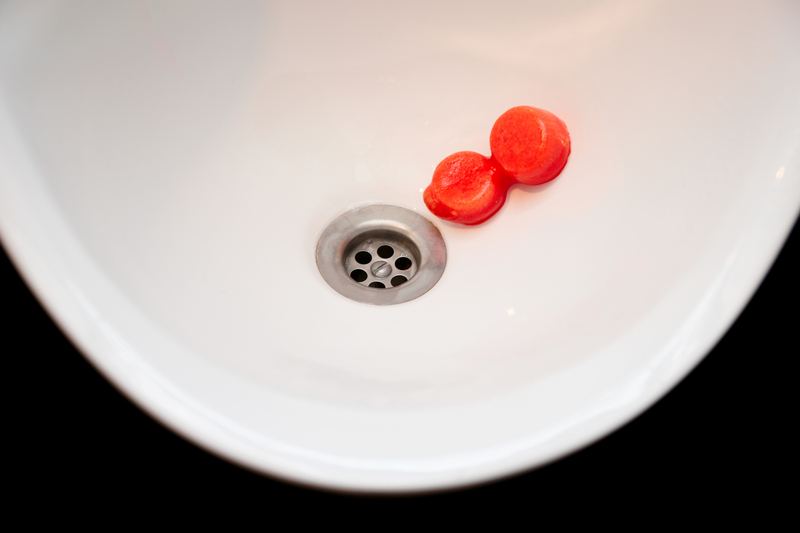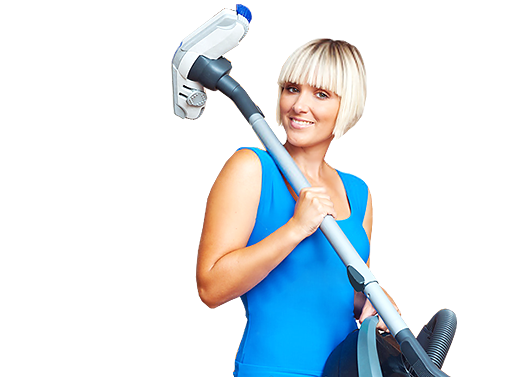Embrace a healthier lifestyle by keeping your home dust-free and allergen-free
Posted on 25/09/2025
Embrace a Healthier Lifestyle By Keeping Your Home Dust-Free and Allergen-Free
In today's fast-paced world, maintaining a healthy lifestyle involves more than just eating well and exercising regularly. Our homes play a crucial role in our overall health, especially when it comes to dust and allergens. By ensuring your home is dust-free and allergen-free, you can significantly boost your well-being, reduce the risk of health complications, and create a sanctuary for you and your loved ones.
Why a Dust-Free and Allergen-Free Home Matters for Your Health
Dust and allergens are more than just nuisances--they are silent contributors to many health problems. Maintaining a clean home environment doesn't just look good--it feels good and helps support a vibrant, healthy lifestyle. Below, we explore exactly why eliminating dust and allergens should top your priority list.
Understanding the Sources of Dust and Allergens
- Indoor Dust: Composed of tiny particles like dead skin, hair, textile fibers, pet dander, and even microscopic creatures like dust mites.
- Allergens: Include pollen, mold spores, bacteria, pet hair, and chemical residues from cleaning supplies or home furnishings.
- Outdoor Pollutants: Pollutants enter through open windows, doors, or shoes and settle indoors as dust.
Health Impacts of Dust and Allergens
- Respiratory Issues: Inhaling dust and allergens can trigger allergies, asthma, and other respiratory problems.
- Skin Irritation: Contact with dust mites and molds can cause itchy skin and rashes.
- Reduced Immunity: Chronic exposure to indoor allergens can weaken your immune response over time.
- Sleep Disruption: Sneezing, coughing, or nasal congestion at night can harm sleep quality.
Embracing a healthier lifestyle by keeping your home dust-free and allergen-free is one of the most effective, yet often overlooked, ways to improve your quality of life.

Tips to Create a Dust-Free and Allergen-Free Home Environment
Transform your living space into a truly healthy home with these practical, effective strategies:
1. Regular Cleaning Routines
- Vacuum Frequently: Choose vacuums with HEPA filters to trap small particles that other vacuums might miss.
- Mop Hard Floors: Use microfiber mops to efficiently pick up dust from hardwood, tile, or laminate flooring.
- Dust Surfaces Correctly: Use damp cloths or electrostatic dusters instead of dry towels, which only spread particles.
- Wash Bedding Often: Launder sheets, pillowcases, and blankets in hot water every week to remove dust mites and skin cells.
2. Control Indoor Humidity Levels
- Keep Humidity Below 50%: Mold and dust mites thrive in damp environments. Use dehumidifiers and air conditioners as needed.
- Ventilate Bathrooms and Kitchens: Install exhaust fans or open windows to reduce moisture levels after showering or cooking.
3. Choose Hypoallergenic Furnishings and Materials
- Opt for Hard Surfaces: Hardwood, tile, or linoleum flooring gathers less dust than carpets and is easier to clean.
- Select Washable Rugs: Machine-washable rugs attract less dust and are easier to keep clean.
- Use Allergen-Proof Covers: Encase pillows and mattresses in dust mite-proof covers to reduce allergen build-up.
4. Improve Air Quality with Purifiers and Plants
- Air Purifiers: HEPA-filter air purifiers capture airborne dust, pollen, and other allergens, making indoor air cleaner and safer.
- Houseplants: Certain plants, such as spider plants and snake plants, can help improve air quality by absorbing toxins and releasing oxygen. Just remember to avoid overwatering, as damp soil can harbor mold.
5. Manage Clutter Effectively
- Declutter Regularly: Dust accumulates on books, knick-knacks, and other objects on shelves and tables. The fewer items you have on display, the less dust there will be.
- Opt for Closed Storage: Store items in cabinets, closets, or lidded boxes to keep them dust-free.
Special Considerations for Pet Owners
Pets are a beloved addition to many homes, but they can also introduce fur, dander, and other allergens. Here are some specific tips:
- Clean Pet Bedding Often: Wash pet beds and toys weekly.
- Brush Pets Outdoors: Minimize fur and dander indoors by grooming pets outside.
- Use Powerful Vacuums: Consider models designed to pick up pet hair and dander.
Choosing the Best Cleaning Products for a Healthy Home
- Go Fragrance-Free: Scented products can contain volatile organic compounds (VOCs) that irritate allergies.
- Use Natural Solutions: Find hypoallergenic or eco-friendly cleaning agents. Homemade cleaners using vinegar, baking soda, or lemon often work well for general cleaning.
- Read Labels Carefully: Be wary of ingredients that may cause allergic reactions or worsen asthma symptoms, such as ammonia or bleach.
Advanced Strategies for Maintaining an Allergen-Free Living Space
1. Professional Deep Cleaning
- Annual Carpet Cleaning: Hire professionals to deep-clean carpets and upholstery annually.
- HVAC System Maintenance: Change air filters regularly and have ducts cleaned every couple of years to prevent dust recirculation.
2. Seal Windows and Doors
- Weatherstripping: Properly sealed windows and doors keep external dust, pollen, and pollution from entering your home.
- Install Screens: Use fine-mesh screens to filter outdoor particles when airing your rooms.
3. Consider Allergen Testing
- Professional Assessments: Companies can analyze your indoor air quality and identify hidden sources of allergens.
- DIY Kits: Home testing kits are available for mold spores, dust mites, and other common allergens.
Creating a Long-Term Plan for a Dust-Free and Allergen-Free Home
Success lies in consistency and ongoing prevention. Use this checklist to ensure your home remains a source of health and comfort:
- Stick to a Regular Cleaning Schedule--set reminders for weekly, monthly, and seasonal tasks.
- Audit Your Home Annually for potential problem areas, such as leaks, damp spots, or excess clutter.
- Update Your Tools and Supplies--replace worn vacuums, upgrade to better filters, and ensure cleaning cloths are in good condition.
- Engage Household Members so everyone contributes to keeping the home clean and allergen-free.

Benefits of a Dust-Free, Allergen-Free Home on Your Lifestyle
When you consistently prioritize a clean, healthy home environment, you'll notice numerous lifestyle improvements:
- Enhanced Respiratory Health: Less sneezing, coughing, and congestion for all family members.
- Better Sleep Quality: No more itchy eyes, running nose, or disrupted breathing at night.
- Improved Focus and Productivity: Clean air fosters a clearer mind and better concentration.
- Longer-Lasting Home Furnishings: Routine dusting and cleaning preserve your belongings.
- Lower Medical Costs: Reduced allergy symptoms and sick days lead to fewer doctor visits and medication needs.
The Psychological Impact of a Clean Home
An orderly, allergen-free home not only promotes physical health but also enhances your mental well-being. Clutter and dust can contribute to feelings of stress and anxiety. In contrast, a tidy, fresh surroundings provide a calming atmosphere where you can truly unwind.
Conclusion: Embrace a Healthier Lifestyle, One Room at a Time
Embrace a healthier lifestyle by keeping your home dust-free and allergen-free--the benefits go far beyond what meets the eye. A clean home supports your immune system, helps you breathe easier, improves your mood, and safeguards your entire family's health. By following the comprehensive strategies outlined in this guide, you'll transform your living space into a true oasis of wellness and comfort.
Take charge of your health today. With these actionable tips and a focus on regular upkeep, you'll soon enjoy the countless rewards of a dust and allergen-free home. Start with one small change, and you'll be amazed at the difference it makes in every facet of your life!
Frequently Asked Questions (FAQ)
-
How often should I clean my home to keep it allergen-free?
Most experts recommend dusting and vacuuming at least once a week, washing bedding in hot water weekly, and deep cleaning carpets and upholstery several times a year. -
Are air purifiers effective against allergens?
High-efficiency particulate air (HEPA) filters are proven to remove airborne allergens such as pollen, dust, and pet dander. -
What is the best way to reduce pet dander?
Frequent grooming and cleaning pet bedding, combined with efficient vacuuming, can greatly reduce dander in your living space. -
Can plants help with indoor air quality?
Certain houseplants may help filter toxins, but they should be maintained properly to avoid mold growth in the soil. -
What should I look for in a vacuum cleaner for allergies?
Choose models with HEPA filters and strong suction power specifically designed for allergy sufferers and pet owners.
Start your journey to a healthier lifestyle now by making your home a haven--dust-free, allergen-free, and full of vitality. Every step you take will help you and your loved ones not only feel better, but thrive for years to come!




